This Hellish Desert Pit Has Been On Fire for More Than 50 Years
In the Turkmenistan desert, a crater dubbed “The Door to Hell” has been burning for decades
There are places on Earth that are a little creepy, places that feel a little haunted and places that are downright hellish. The Darvaza gas crater, nicknamed by locals "The Door to Hell," or "The Gates of Hell," definitely falls into the latter category—and its sinister burning flames are just the half of it. Located in the Karakum Desert of central Turkmenistan (a little over 150 miles from the country's capital) the pit attracts hundreds of tourists each year. It also attracts nearby desert wildlife—reportedly, from time to time local spiders are seen plunging into the pit by the thousands, lured to their deaths by the glowing flames.
So how did this fiery inferno end up in the middle of a desert in Turkmenistan? In 1971, when the republic was still part of the Soviet Union, a group of Soviet geologists went to the Karakum in search of oil fields. They found what they thought to be a substantial oil field and began drilling. Unfortunately for the scientists, they were drilling on top of a cavernous pocket of natural gas which couldn't support the weight of their equipment. The site collapsed, taking their equipment along with it—and the event triggered the crumbly sedimentary rock of the desert to collapse in other places too, creating a domino-effect that resulted in several open craters by the time all was said and done.
The largest of these craters measures about 230-feet across and 65-feet deep. Reportedly, no one was injured in the collapse, but the scientists soon had another problem on their hands: the natural gas escaping from the crater. Natural gas is composed mostly of methane, which, though not toxic, does displace oxygen, making it difficult to breathe. This wasn't so much an issue for the scientists, but for the animals that call the Karakum Desert home—shortly after the collapse, animals roaming the area began to die. The escaping methane also posed dangers due to its flammability—there needs to be just five percent methane in the air for an explosion to potentially take place. So the scientists decided to light the crater on fire, hoping that all the dangerous natural gas would burn away in a few weeks' time.
It's not as outlandish as it sounds—in oil and natural gas drilling operations, this happens all the time to natural gas that can't be captured. Unlike oil, which can be stored in tanks indefinitely after drilling, natural gas needs to be immediately processed—if there's an excess of natural gas that can't be piped to a processing facility, drillers often burn the natural gas to get rid of it. It's a process called "flaring," and it wastes almost a million dollars of worth of natural gas each day in North Dakota alone.
But unlike drillers in North Dakota or elsewhere, the scientists in Turkmenistan weren't dealing with a measured amount of natural gas—scientists still don't know just how much natural gas is feeding the burning crater—so what was supposed to be a few-week burn has turned into almost a half-century-long desert bonfire.
After visiting the crater in 2010, Turkmenistan's president Kurbanguly Berdymukhamedov, worried that the fire would threaten the country's ability to develop nearby gas fields, ordered local authorities to come up with a plan for filling the crater in. No action has been taken, however, and the crater continues to burn, attracting unsuspecting wildlife and international tourists.
To visit the Darvaza gas crater, it's best to go at night, when the fire can be seen from miles away. The crater is located about 161 miles (about a 4 hour drive) from the Turkmen capital Ashgabat. Tours can be booked through agents in Ashgabat. Alternatively, some companies offer more structured tours of the surrounding area, with the Darvaza crater included (such as a tour, by the Geographical Society of New South Wales).
Planning Your Next Trip?
Explore great travel deals
Smithsonian magazine participates in affiliate link advertising programs. If you purchase an item through these links, we receive a commission.
/https://tf-cmsv2-smithsonianmag-media.s3.amazonaws.com/accounts/headshot/natasha-geiling-240.jpg)
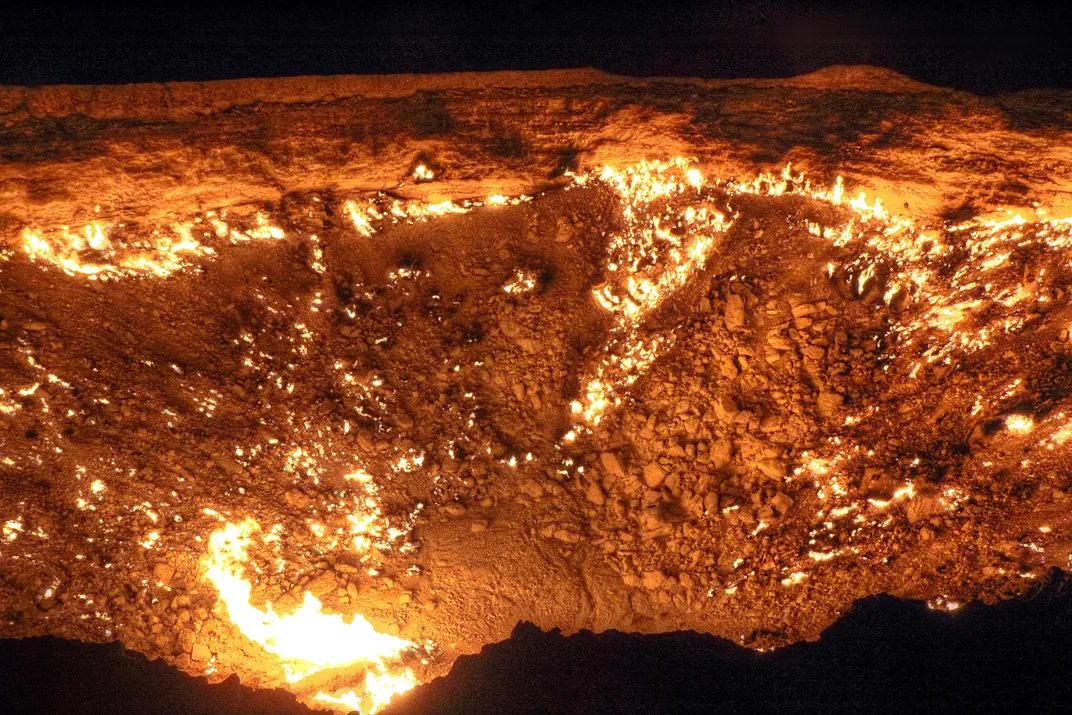
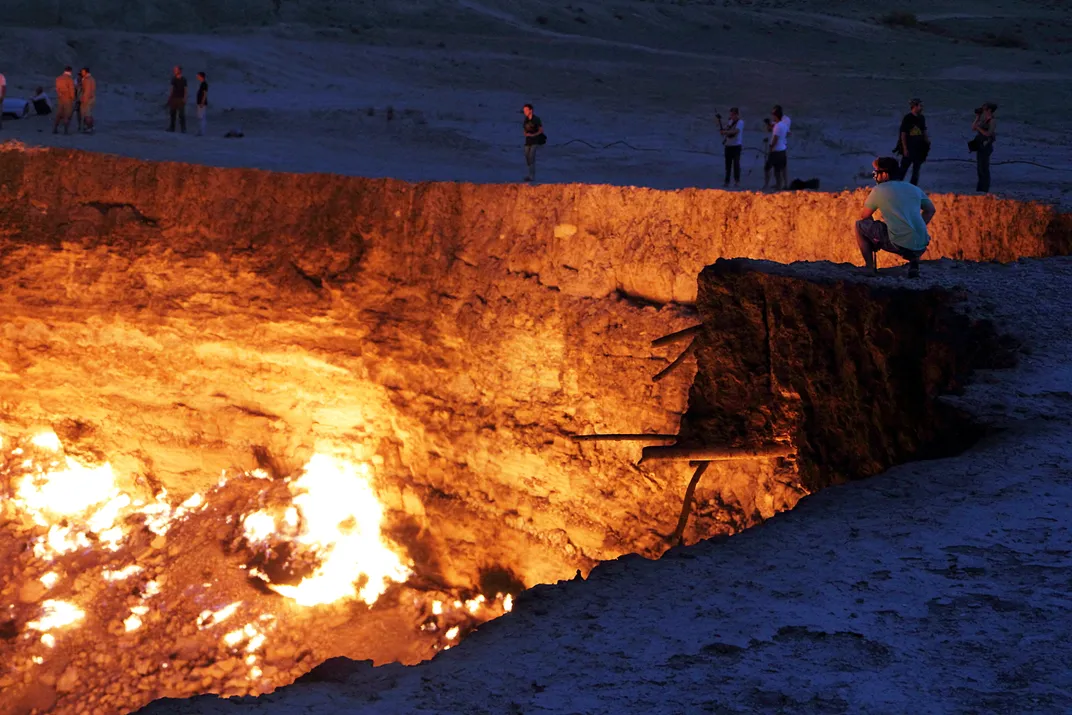
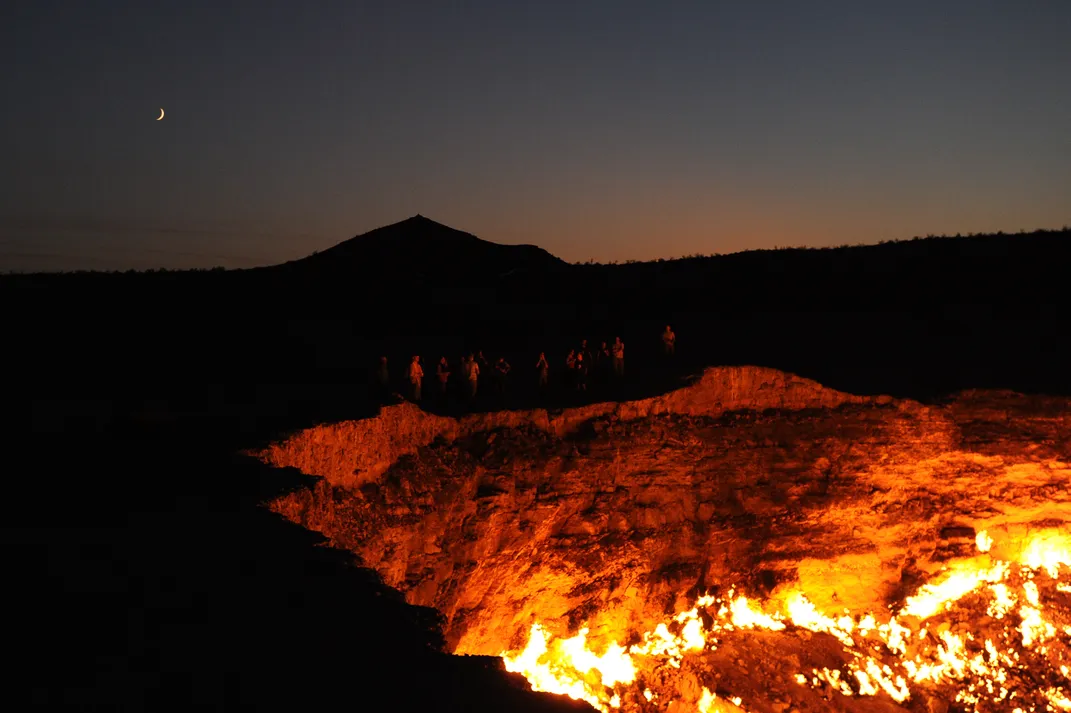

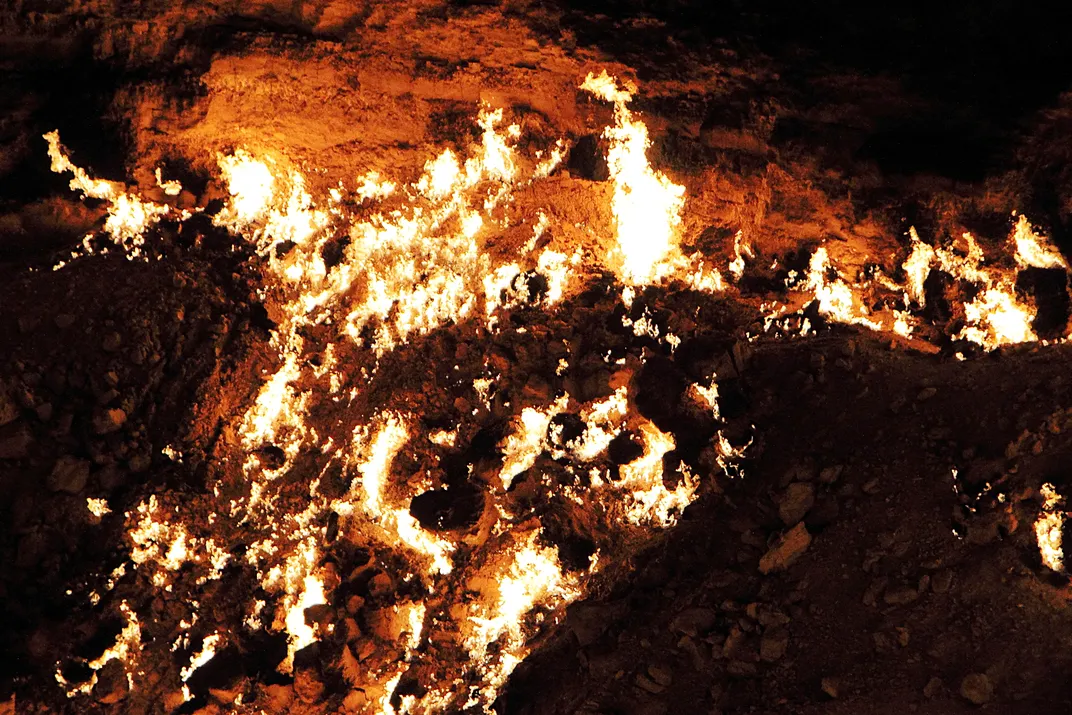
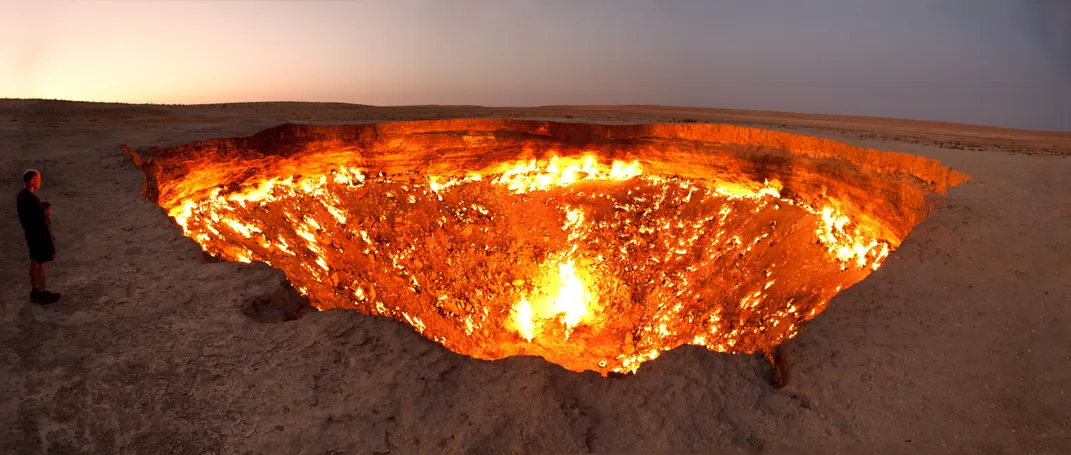

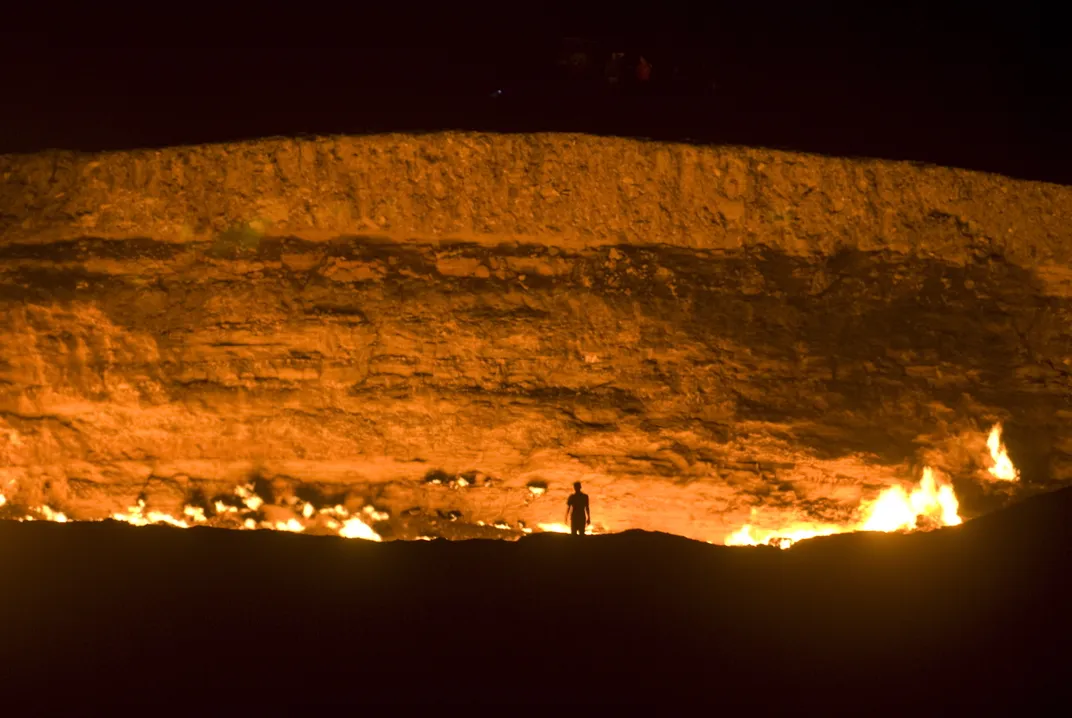
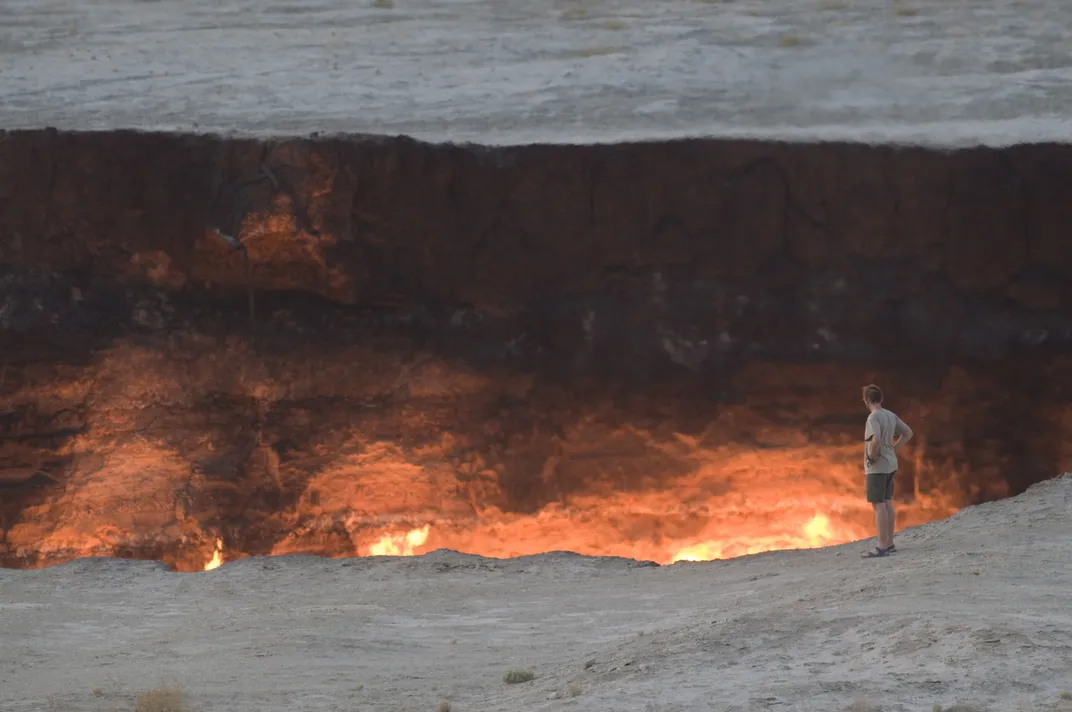

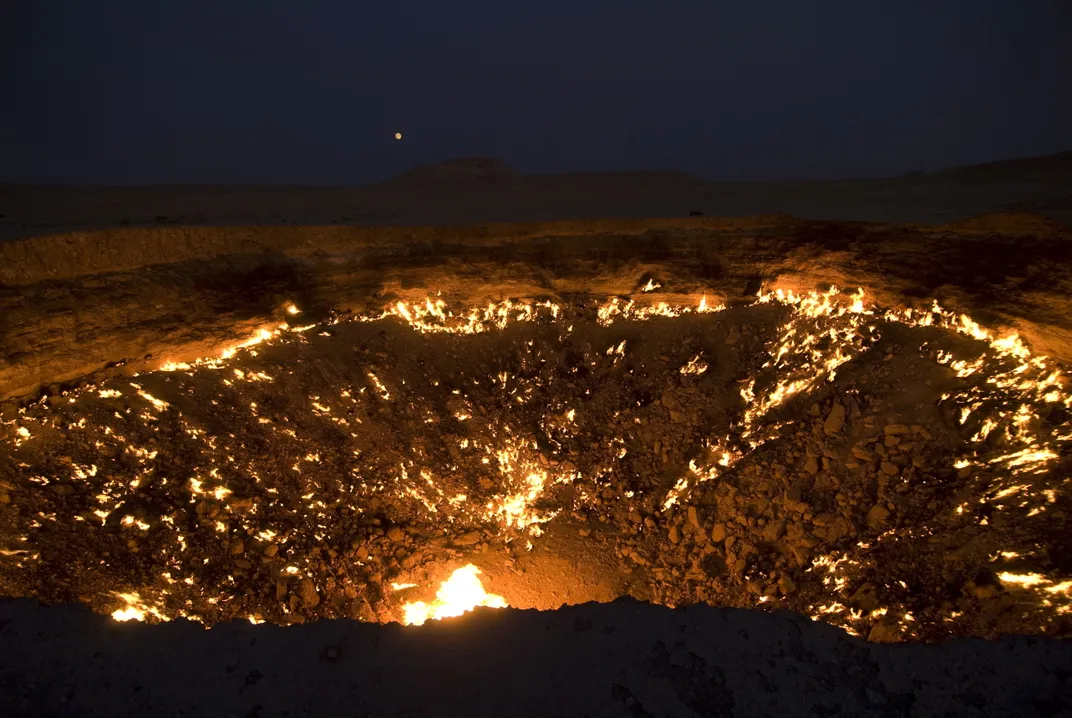
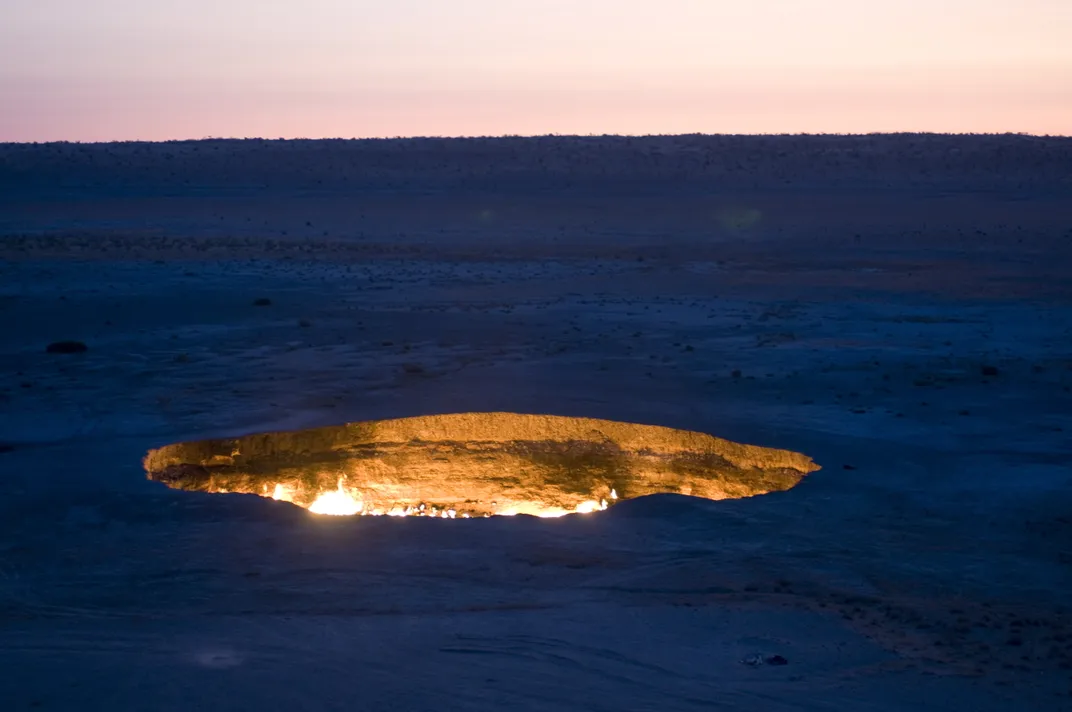


/https://tf-cmsv2-smithsonianmag-media.s3.amazonaws.com/accounts/headshot/natasha-geiling-240.jpg)